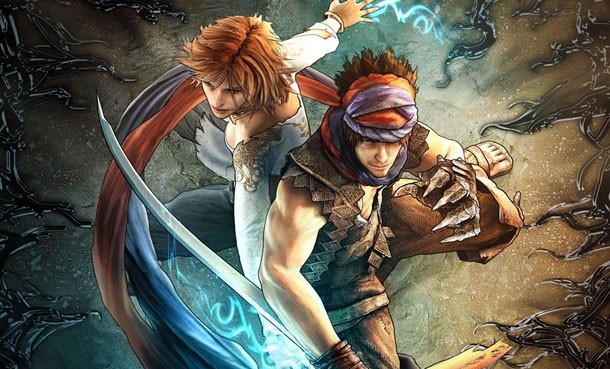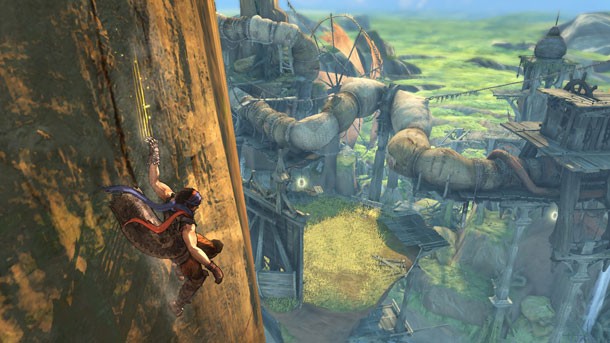Our extra-large special edition is here. Subscribe today and receive the 25% longer issue at no extra cost!
Cult Classics – Prince Of Persia (2008)

For many fans of the Prince of Persia, the 2008 release is a low-point for the series. It kept the series’ trademark wall-running and platforming elements, but was a drastic departure in other areas. Some people decry it because of its ending and its lack of challenge, but I absolutely adore it, and think that it’s far better than it gets credit for.
Ico taught many developers a crucial lesson in game design: having a sympathetic partner with you during your adventure makes everything more meaningful. This is a lesson that Bioshock Infinite put to good use, and it is one that Prince of Persia arguably executed to an even greater degree. In Ico, you help Yorda through the course of the game. She is a burden, but she is not one that the player minds taking care of. In Bioshock Infinite, Elizabeth is not a burden. She stays out of your way while you work, offering a helping hand when she can. In Prince of Persia, Elika is your crucial partner. You are her burden. She saves you every time you die, helps you fight, and helps you climb. You can engage in conversation with her at any time, building your relationship with her at your own pace. She is the true protagonist of the game, and you’d have to be heartless to not fall in love with her by the end.
The art direction in Prince of Persia is one of the few elements of the game that nearly no one complains about. The game is absolutely gorgeous. It looks like a water-color painting, and every section of its open world is distinct and beautiful. The game even pushes you to great heights in order to look out over its engrossing vistas as you learn about what happened to this world and why Elika is struggling to fix it.
The gameplay looks like a Prince of Persia game, but plays something a little bit closer to a rhythm game, and scales back the focus on combat significantly. You can’t die per se, because when you fall from a deadly height, or lose all your health in combat, Elika saves you. This makes the game much easier compared to other games in the series, but it is all in favor of the world and your immersion within it. Not dying means there is no need to simply accept the conceit that characters in video games are constantly dying and reappearing. You don’t need to suspend your disbelief. Elika and the Prince’s journey is a continuous one.
I won’t offer specifics about the ending in fear of spoiling it, but I will say that it is one that is unfairly criticized. It’s an atypical video game ending, and I hope that in time, players will be able to understand that it eschewed the ‘Hollywood’ ending in order to stay true to the nature of its characters and the high-stakes of the world. I’m sorry to be so ambiguous, and I apologize if I am not being ambiguous enough. Ubisoft pulled a Mass Effect 3 nearly four years before Shepard’s journey by releasing DLC that changed the ending, possibly in response to the critical reception. I think the ending was beautiful and perfect as it was, and I encourage anyone who decides to give this game a shot to not even bother with it – unless a sequel gets announced.

I still boot up the game every now and then to breathe in its world, and watch the Prince and Elika work together in acrobatic harmony. It’s a game whose focus is on the experience and the beauty of traveling through the world. It has more in common with the recently released thatgamecompany title, Journey than the Prince of Persia: Sands of Time trilogy. I am always heartbroken to hear that people don’t like it. It’s a different type of game with a Prince of Persia cloak, and its well worth the time of anyone who wants to see the medium of video games elevated to a state of legitimate artistic expression.

Get the Game Informer Print Edition!
Explore your favorite games in premium print format, delivered to your door.
- 10 issues per year
- Only $4.80 per issue
- Full digital magazine archive access
- Since 1991









